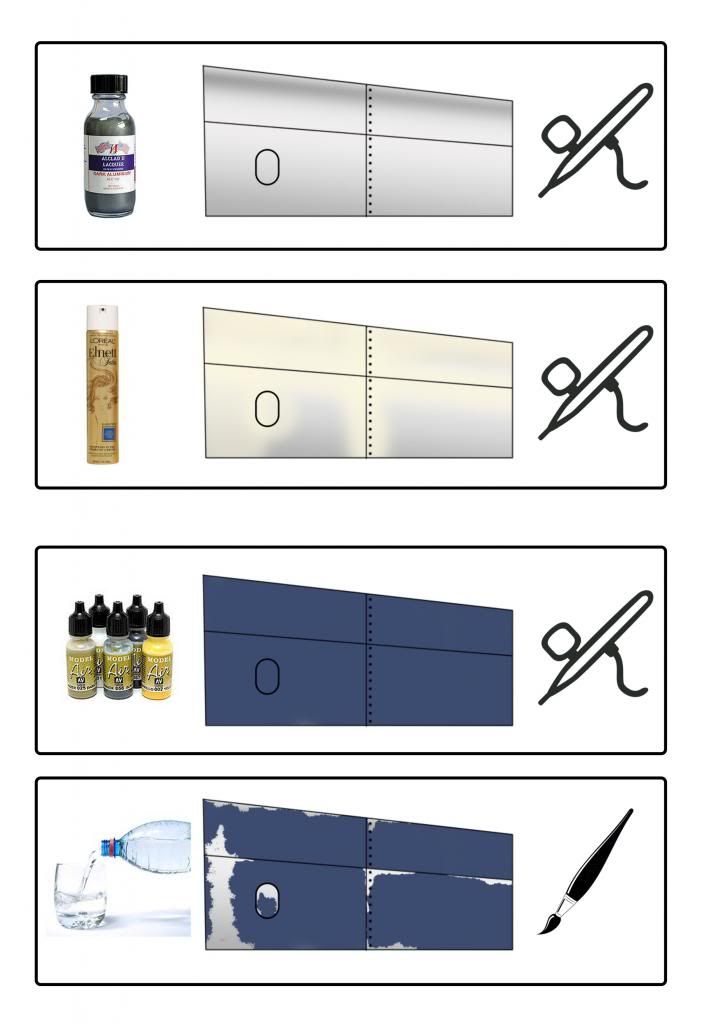WHAT? You agaaaaiiinnn???

Thanks for the kind words, but bear with me, because that's a huge fuselage with plenty of scope to completely f@£k it up..
I'm employing hairspray as my current favourite weathering tool. Especially when it comes to chipped areas it's very handy, but also when I'm doing subtle colour modulation.. The hairspray acts as a dissolvable layer between layers of paint. It's imperative this is only done via airbrush!!
I've illustrated my method, with materials I use, but these can be substituted for whatever materials you're comfortable with. I must add, I haven't tried this with enamels yet, primarily because I loathe enamels.
Step 1: Base layer.
Your base layer will be the underlying colour coming through the top layer. So that'd be aluminium for aircraft (or primer, or both..), a dark brown for armour, or any manner of previous colour scheme.
Step 2: Hairspray.
I find decanting hairspray into the airbrush helps to create an even, more localised application than just simply blitzing the kit with it directly from the can. There's no preference in hairspray. There are several chipping fluids now on the market, but hairspray is available cheaply from anywhere up to and including petrol stations.
Step 3: Top coat.
Paint it in whatever you were intending do now. This can include preshading (something I generally don't bother with) and any other fancy tricks you enjoy.
Step 4: Water
When the top coat is dry (enough..

) you then take a brush loaded with water and gently scrub the areas you want chipped.. Be it walk ways, inspection hatches or leading edges. If you want a certain panel to be more chipped than another, then you can even mask the edge to a degree.
Step 5: Seal
Not illustrated, but it's the next step in the process anyway. Seal with the clear of your choice and continue as normal..
Or:
If, for instance, you want to have a primer showing as well as bare metal showing, do steps 1-5 for areas you want to have the primer showing, but use the primer colour as the top coat. Then seal and repeat steps 2-5 with the eventual top coat colour.




